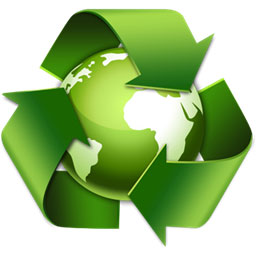See the Truth behind Plastics Waste Management and Recycling in Canada

Plastic recycling is on the simplest forms of recycling for the typical Canadian to take part in. It is very imposing or time-consuming for a person to throw an obviously plastic piece of refuse into a designated plastic bin instead of the general garbage can. This is the part that concerns the consumer but there is much more to plastic recycling than that. The plastic isn’t simply transformed into new plastic item. There is a complex and many-stepped process that plastic undergoes in order to be recycled. Most don’t really understand the process and would be surprised by it.
Recycling is often thought of as a wholly positive process. This isn’t always the case. There are many aspects of recycling that don’t live up to the idealized version that many have in their heads. Worldwide, only 10 percent of plastic ends up being recycled. Those that think recycling validates the excessive plastic use of today likely weren’t aware of that fact. The remainder ends up either in a landfill, the best-case scenario, or strewn about the outdoors, the worst case. Up to 30 percent of the plastic that gets out of the disposal system isn’t accounted for, nobody knows where it is.
The plastic water bottle is one of the most widely used plastic products. One might imagine that the plastic is simply melted and reused as a raw material for new plastic products. This simply isn’t the case. The plastic that water bottles are made from is one of the rare types of plastic that are suitable for recycling. However, this type of plastic loses much of its quality after the first use. The plastic can’t be used in the same or similar application as its first use. These plastics typically end up as items that can’t be recycled. The bottle takes an extra lap and is then bound for the landfill.
Recycling is a much more finicky and fine-tuned process than most might imagine. The popular conception of recycling is that plastics are shredded by large metal grinders and then melted. The most important part of plastic recycling is actual several stages of sorting. There are many plastics that aren’t recyclable but end up at the recycling facility anyway. One of the largest offenders in this arena is strongly colored plastic. Any dark or strongly color plastic causes huge problems as the dye spreads, much like a red shirt in a washing machine ruining white clothing.
A recent trend in the area of single use plastics is the marketing of products as “bio-degradable”. At face value this seems like a good deal for everyone involved. The plastics can’t possibly end up in a long-term landfill if they biodegrade, right? Unfortunately the use of the term “bio-degradable” isn’t exactly what it seems. If sent to a municipal composting facility they’ll break down just fine. These facilities operate at a higher temperature than the ambient outdoors. Without that heat, the plastics don’t break down. If the plastics are litter, they’ll stay indefinitely.
Help us work together to minimize plastic waste in Toronto. Core Mini Bins is a top Toronto waste management company, prioritizing the safe and effective disposal of all waste products including problematic plastics and more. To save on waste, contact a representative today.


